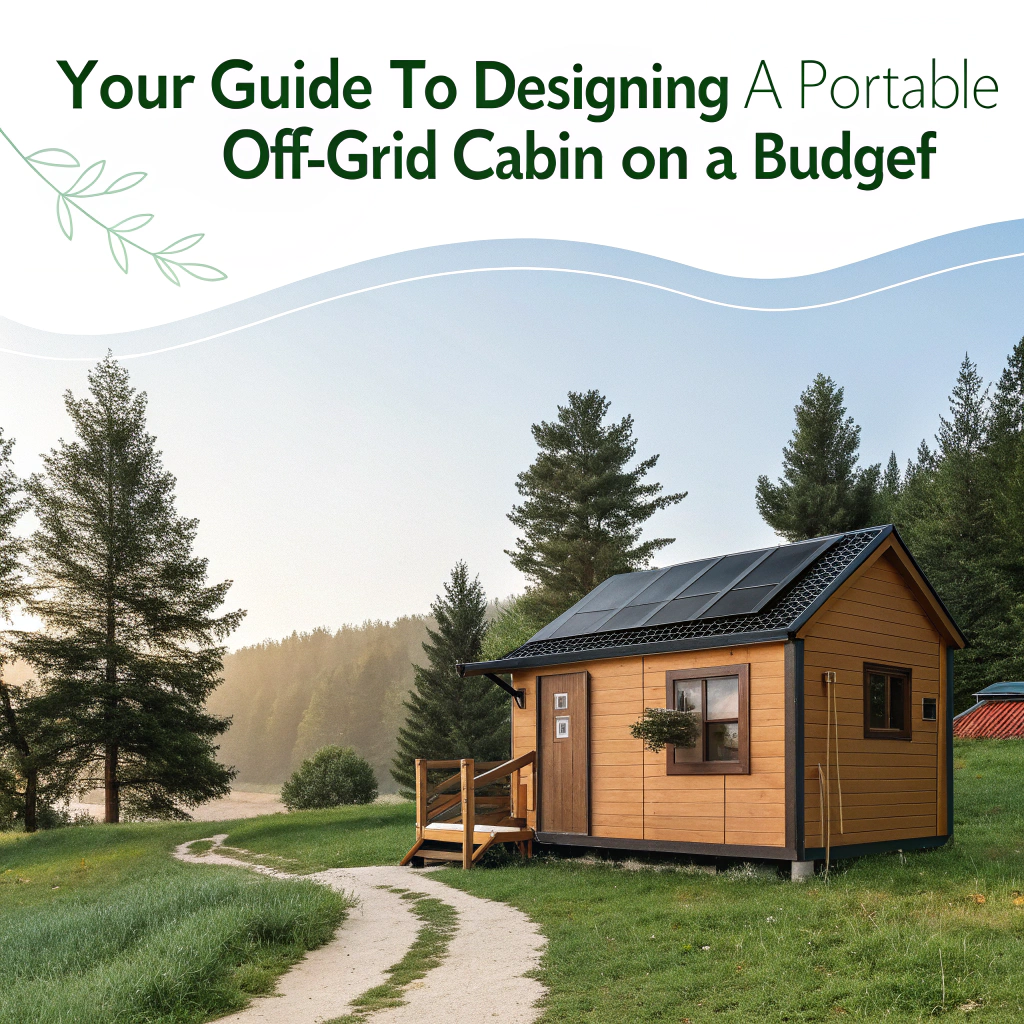In an age where urban living often feels overwhelming, the allure of a portable off-grid cabin is more appealing than ever. Imagine a cozy retreat nestled in nature, where you can escape the hustle and bustle of daily life without breaking the bank. This guide will walk you through the essential steps to design and build your own portable off-grid cabin on a budget, ensuring you can enjoy the tranquility of nature without financial strain.
Why This Topic Is Worth Reading

Designing a portable off-grid cabin is not just about creating a physical space; it’s about embracing a lifestyle that prioritizes sustainability, simplicity, and self-sufficiency. This article will provide you with practical insights and actionable steps to make your dream cabin a reality.
By understanding the principles of off-grid living, you can reduce your environmental footprint while enjoying the freedom that comes with being self-reliant. Whether you’re looking for a weekend getaway or a permanent residence, this guide will equip you with the knowledge to create a space that meets your needs and respects the environment.
Moreover, building a cabin on a budget is entirely feasible with the right planning and resourcefulness. You’ll learn how to source materials, design efficiently, and implement sustainable practices that will save you money in the long run.
Key Highlights or Must-Know Points
- Understanding the basics of off-grid living and its benefits.
- Choosing the right location for your cabin.
- Budget-friendly materials and construction techniques.
- Essential off-grid systems for water, power, and waste management.
Designing Your Portable Off-Grid Cabin
- Choose Your Location
Finding the perfect spot for your cabin is crucial. Look for land that is accessible yet secluded, ideally near natural resources like water and timber. Research local zoning laws and regulations to ensure you can build legally.
- Plan Your Design
Sketch out your cabin’s layout, keeping in mind the size and functionality. A simple design with an open floor plan can save on materials and labor costs. Consider using multi-functional furniture to maximize space.
- Select Budget-Friendly Materials
Opt for reclaimed or locally sourced materials to cut costs. Pallets, for example, can be transformed into furniture or even walls. Additionally, consider using natural insulation materials like straw bales or wool to enhance energy efficiency.
- Implement Off-Grid Systems
To live off-grid, you’ll need systems for water, power, and waste management. Rainwater harvesting systems can provide water, while solar panels or wind turbines can generate electricity. Composting toilets are an eco-friendly solution for waste disposal.
- Focus on Sustainability
Incorporate sustainable practices into your cabin design. Use energy-efficient appliances, install proper insulation, and consider passive solar design to reduce energy consumption. This not only saves money but also minimizes your environmental impact.
Extra Tips, Notes, or Warnings
- Research Local Resources
Before starting your project, familiarize yourself with local resources such as building supply stores, recycling centers, and community workshops. These can provide valuable materials and support.
- Network with Other Off-Grid Enthusiasts
Join online forums or local groups focused on off-grid living. Sharing experiences and advice can help you avoid common pitfalls and inspire new ideas for your cabin.
- Be Prepared for Challenges
Building an off-grid cabin can be challenging, especially if you’re new to construction. Be patient and willing to learn as you go. Consider taking workshops or online courses to build your skills.
Common Questions Answered
What is the average cost of building an off-grid cabin? The cost can vary widely based on location, materials, and size, but many people manage to build a basic cabin for between $5,000 and $20,000.
How do I ensure my cabin is truly off-grid? To be off-grid, you need to be self-sufficient in water, power, and waste management. This typically involves installing solar panels, a rainwater collection system, and a composting toilet.
Can I build a portable cabin myself? Yes! Many people successfully build their own cabins using DIY methods. There are numerous resources available online to guide you through the process.
What are the best materials for a budget-friendly cabin? Reclaimed wood, pallets, and natural insulation materials are excellent choices for keeping costs down while ensuring durability.
Final Thoughts
Designing a portable off-grid cabin on a budget is not only achievable but also a rewarding endeavor that can lead to a more sustainable and fulfilling lifestyle. By following the steps outlined in this guide, you can create a space that reflects your values and allows you to connect with nature. Embrace the journey, and remember that every small step you take towards self-sufficiency is a step towards a more sustainable future.
Get Involved
We invite you to share your thoughts and experiences with off-grid living! Have you built your own cabin or are you considering it? Leave your feedback, ask questions, or share your ideas in the comments below. For more wonderful content on sustainable living and DIY projects, check out my site at mindofgriff.com.
Leave a Reply